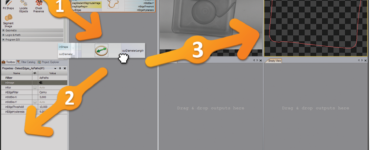METAR reports play a vital role in aviation, providing crucial information about current weather conditions at airports worldwide. Pilots, air traffic controllers, and aviation enthusiasts rely on METAR reports to make informed decisions. In this comprehensive guide, we will delve into the world of METAR reports and introduce you to AddSMETAR, a valuable tool for accessing METAR data. Let’s take off and explore the skies of meteorological knowledge!
What is METAR?
Before we dive into AddSMETAR, let’s understand the basics. METAR, short for Meteorological Aerodrome Report, is a standardized format used to report weather observations at airports. These reports are typically generated every hour and provide information on temperature, wind speed and direction, visibility, cloud cover, and more. METAR reports are crucial for flight safety, allowing pilots to assess weather conditions before takeoff and landing.
Why are METAR Reports Important?
METAR reports serve several essential purposes:
- Flight Safety: Pilots rely on METAR reports to assess weather conditions at their departure and destination airports, ensuring safe flights.
- Airport Operations: Air traffic controllers use METAR data to manage airport operations, including runway selection and traffic flow.
- Weather Forecasting: Meteorologists use METAR reports as input for weather forecasting models, improving the accuracy of weather predictions.
- Emergency Response: METAR reports help emergency services plan and respond to weather-related incidents.
- Aviation Enthusiasts: Aviation enthusiasts and hobbyists use METAR reports to track weather conditions and plan spotting trips.
Understanding METAR Format
METAR reports follow a strict format, with various elements presented in a specific order. Let’s break down the key components:
- Station Identifier: The four-letter ICAO code representing the airport where the observation was made.
- Date and Time: The date and time of the report, typically in UTC (Coordinated Universal Time).
- Wind: Wind direction and speed in knots, along with gusts if present.
- Visibility: Visibility range in meters or statute miles.
- Weather Phenomena: A description of weather conditions, such as rain, snow, or fog.
- Sky Conditions: Information on cloud cover, including cloud type and height above ground.
- Temperature and Dew Point: Current temperature and dew point in degrees Celsius.
- Altimeter Setting: Barometric pressure at sea level, enabling altitude adjustments for aircraft.
- Remarks: Additional remarks, which may include information about significant weather events or equipment malfunctions.
AddSMETAR: Your METAR Resource
Now, let’s introduce you to AddSMETAR, a powerful tool for accessing METAR reports conveniently. AddSMETAR offers the following features:
- Real-Time METAR Data: AddSMETAR provides up-to-date METAR reports, ensuring you have the latest weather information at your fingertips.
- User-Friendly Interface: Its intuitive interface makes it easy for both aviation professionals and enthusiasts to access METAR reports quickly.
- Customizable Alerts: Set personalized alerts for specific weather conditions at your chosen airports, ensuring you’re always informed.
- Historical Data: Access historical METAR reports to analyze past weather trends and patterns.
- Mobile Compatibility: Use AddSMETAR on your mobile device, making it a versatile tool for pilots on the go.
How to Use AddSMETAR
Using AddSMETAR is a breeze:
- Access the Website: Go to the AddSMETAR website and enter the ICAO code of the airport you’re interested in.
- View METAR Report: Instantly view the METAR report for the selected airport, including all relevant weather information.
- Set Alerts: Create custom alerts based on specific weather conditions or ICAO codes to stay informed about changes.
- Explore Historical Data: Dive into historical METAR reports to track weather trends and patterns.
Conclusion
In conclusion, METAR reports are indispensable for aviation safety and weather forecasting. AddSMETAR enhances your access to these reports, providing real-time data and valuable features for aviation professionals and enthusiasts alike. Whether you’re a pilot, air traffic controller, or weather enthusiast, AddSMETAR is your go-to resource for staying informed about current weather conditions at airports worldwide. So, bookmark AddSMETAR and keep the skies safer and more predictable for everyone involved in aviation!










